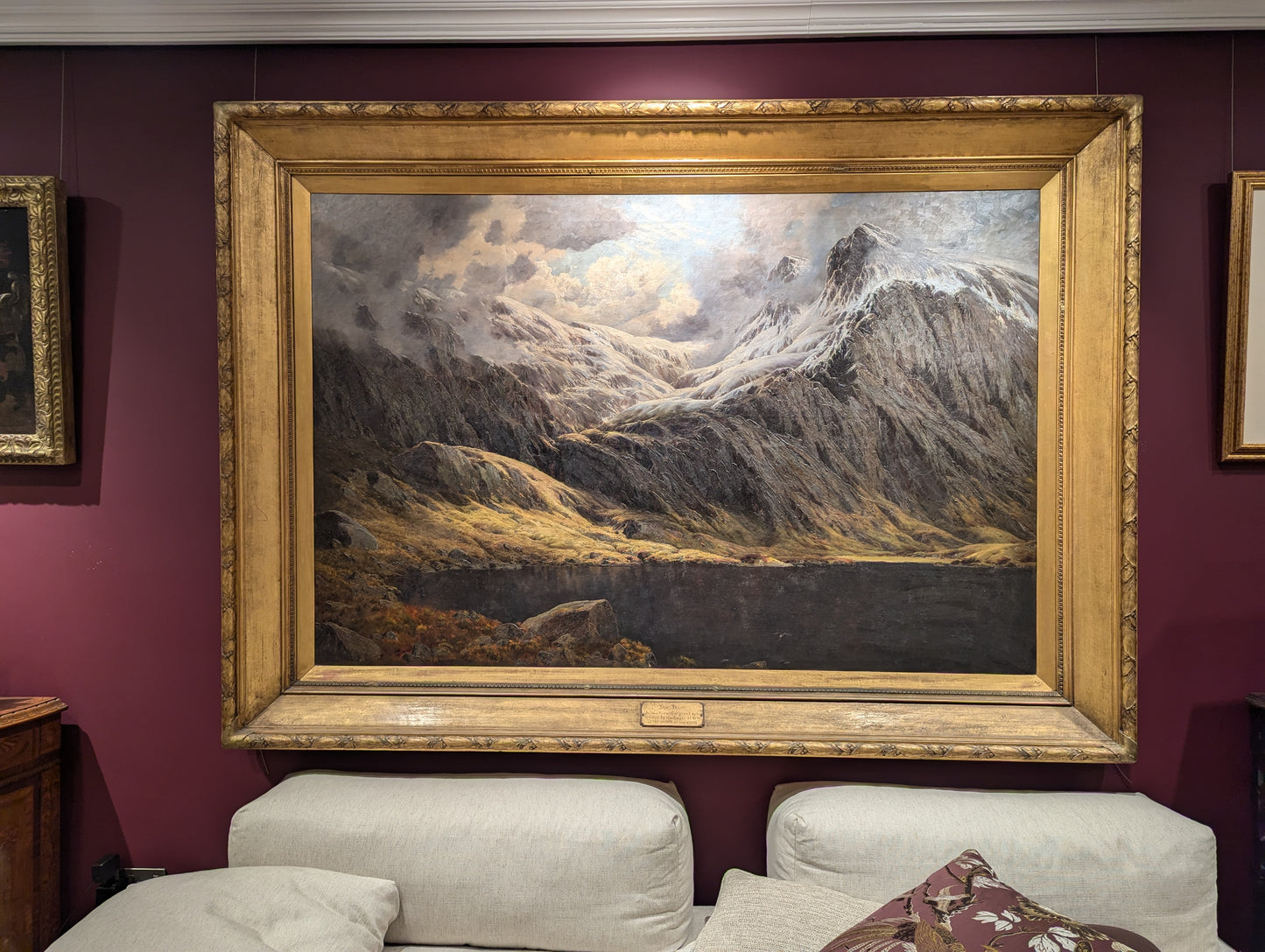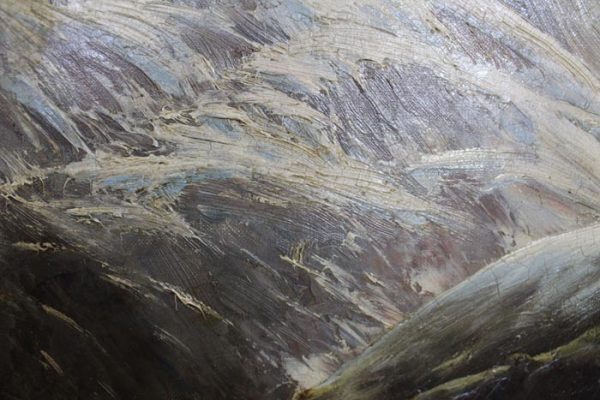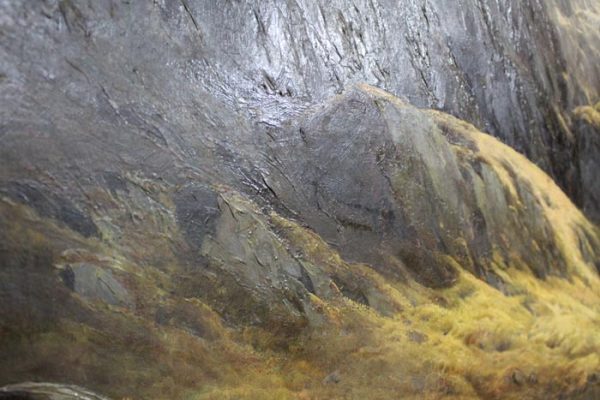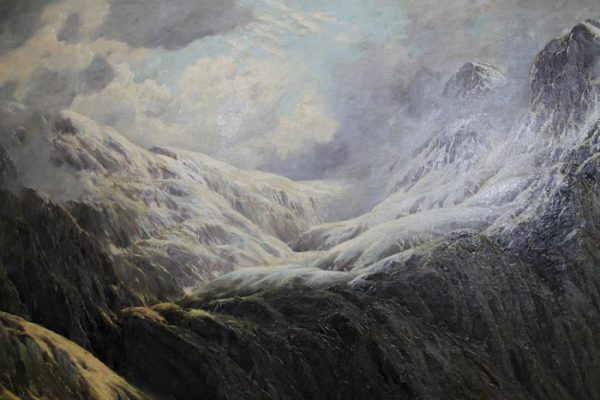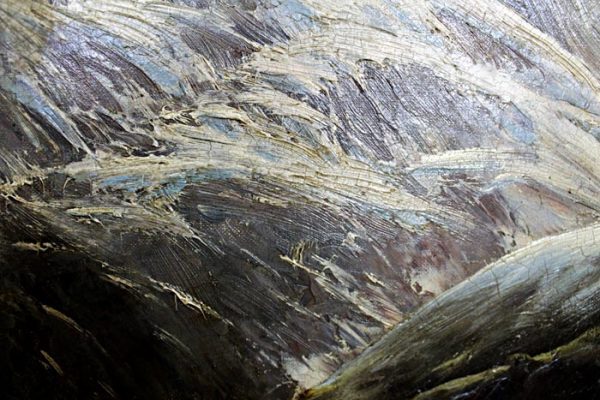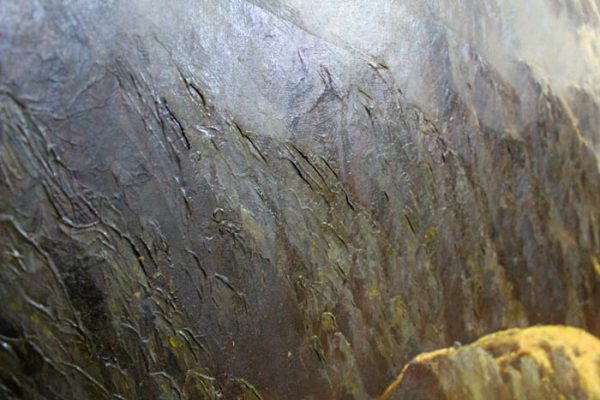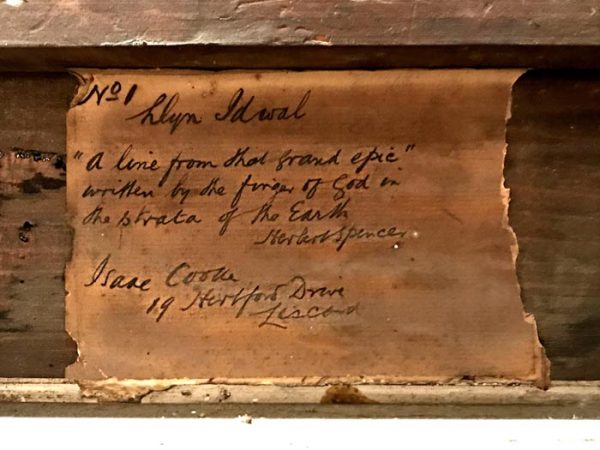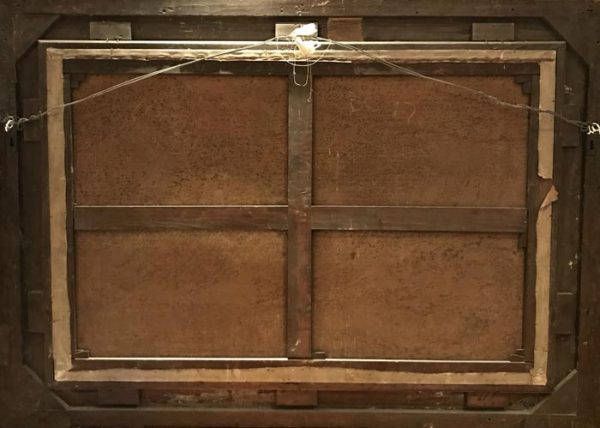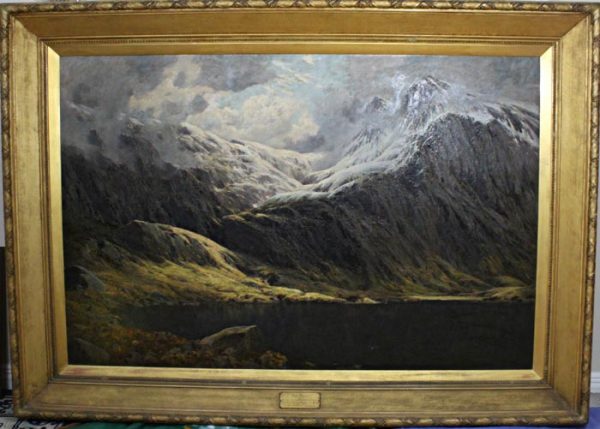My Store
Victorian Landscape Llyn Idwal Snowdonia - Isaac Cooke RBA 1846-1922
Victorian Landscape Llyn Idwal Snowdonia - Isaac Cooke RBA 1846-1922
Couldn't load pickup availability
Grand Victorian Masterpiece of Welsh Landscape
Behold this magnificent Victorian oil painting portraying the picturesque Llyn Idwal in Snowdonia, Wales, by the accomplished British artist Isaac Cooke, RBA (1846-1922). This grand masterpiece exemplifies the finest traditions of Victorian landscape painting, capturing the sublime beauty and dramatic atmosphere of one of Wales' most celebrated natural landmarks.
Exceptional Features
- Artist: Isaac Cooke, RBA (1846-1922)
- Subject: Llyn Idwal, Snowdonia, Wales
- Period: Victorian era, late 19th century
- Medium: Oil on canvas
- Royal Society of British Artists member
- Grand scale Victorian landscape
- Exceptional provenance and quality
About Isaac Cooke, RBA
Isaac Cooke (1846-1922) was a distinguished Victorian landscape painter and member of the Royal Society of British Artists (RBA). He specialized in dramatic mountain and coastal scenes, particularly of Wales and Scotland. Cooke's work is characterized by masterful handling of light and atmosphere, capturing the sublime grandeur of the British landscape. His paintings are held in private collections and have appeared at major auction houses.
Llyn Idwal - A Celebrated Landscape
Llyn Idwal is one of Snowdonia's most iconic glacial lakes, surrounded by dramatic mountain peaks. Victorian artists were drawn to its sublime beauty and geological significance. This painting captures the romantic spirit of Victorian landscape art, where nature's grandeur inspired both scientific interest and aesthetic wonder.
Artistic Excellence
This painting demonstrates Cooke's mastery of atmospheric perspective, dramatic composition, and the subtle rendering of light on water and mountain. The grand scale and accomplished technique make this a museum-quality example of Victorian landscape painting at its finest.
🎨 Artist: Isaac Cooke, RBA (1846-1922)
📍 Subject: Llyn Idwal, Snowdonia, Wales
📅 Period: Victorian, late 19th century
🖼️ Medium: Oil on canvas
🏛️ Location: Artemisia Fine Arts & Antiques Ltd, Malta
A museum-quality Victorian masterpiece perfect for collectors of British landscape painting, Welsh art, or Victorian fine art.
Share
